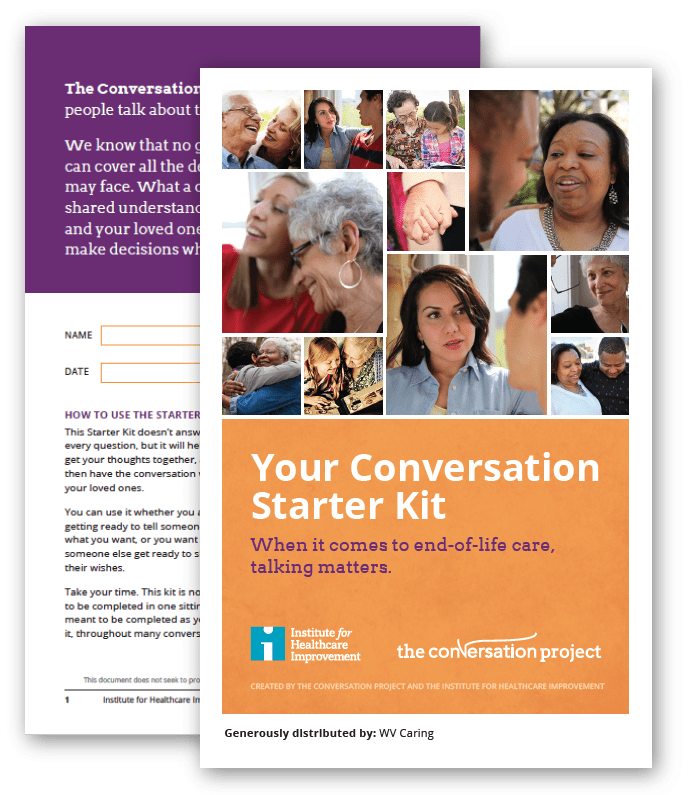
Hospice is a different experience for everyone.
While hospice is often introduced by a medical professional if the patient has six months or less to live, but if you want your aging loved one to have an improved quality of life and comfort, discuss hospice with your doctor today.
What is Hospice Care?
Hospice care is for terminally ill patients for whom curative treatments are no longer working. Hospice care is also known as end-of-life care and is often recommended to a patient who has 6 months or less to live.
Unlike other medical care, the goal of hospice care is to support the highest quality of life possible and give the patient relief from pain, shortness of breath and other symptoms.
Where is Hospice Care Provided?
Hospice care is often provided in the comfort of the patient’s home with a family member serving as the primary caregiver.
Alternatively, hospice care can also be provided in an assisted living facility, nursing homes, hospitals, or dedicated hospice facilities.
The Hospice Team
Hospice care is provided by a multidisciplinary team. The team consists of spiritual professionals, highly trained doctors, registered nurses, and volunteers working together to provide complete comfort to the terminally ill patient and care and support to the family and friends.
-
Primary Care Physician
The primary care physician is your current trusted doctor. The primary physician is responsible to determine the patient’s needs and candidacy for hospice. The doctor should refer the patient to a hospice program.
-
Registered Nurse Case Manager
The registered nurse case manager will visit the patient twice or thrice a week, more if required. The RN ensures that the patient’s needs and the needs of the family members are being met by the hospice professionals. The RN is also responsible to supervise the care provided to the patient and his family.
-
Social Workers
Hospice social workers set up a plan of care for the patient’s psychological needs while working in close association with the patient’s loved ones, family and caregivers. They provide emotional support, counseling, and help the family members navigate through the paperwork.
-
Bereavement Counselor
The bereavement counselor helps the patient’s family understand and process the feeling of grief that comes along with a terminal illness diagnosis. According to Medicare regulations, bereavement services are provided throughout the period when the patient is in hospice care and up to 13 months following the death of the patient.
-
Chaplain
The chaplain is the spiritual care leader of the hospice team. He helps the patient’s loved ones navigate the spiritual end-of-life- journey.
-
Hospice Volunteers
Hospice volunteers help the patient and his family members by assisting in household tasks, preparing meals, running errands, and providing companionship.
-
Home Health Aide
Hospice home health aides help the family with light around-the-house tasks. They help educate the caregiver on how to provide the best end-of-life care to the patient.
The 4 Levels of Hospice Care
Hospice care focuses on providing comfort, support, and dignity at the end of life. When a patient enrolls in a hospice program, wide arrays of services are provided by the hospice professionals.
-
Routine Home Care
Routine home care services include:
- Volunteers visit as required
- Visits by registered nurses
- Medications
- Equipment
- Home health aide services
- Chaplain
- Counselors visits
- Therapy, if required
Routine care makes it easy to manage the terminal illness patient and help him maintain comfort.
-
Continuous Home Care
In the United States, hospice is oriented around home-based care, but in other countries of the world, hospice started out as a facility-based service.
Nowadays, it is easier for patients to access hospice care either from a facility or at home. If the patient chooses to stay at home, the hospice caregivers provide the services at home.
Continuous home care is provided between 8 to 24 hours a day to make it easier for the patient to manage pain and other acute symptoms.
-
General Inpatient Care
General inpatient care is for those patients whose symptoms cannot be managed through home care.
In order to assure the patient’s comfort, he is moved into a hospice facility where the patient receives extra attention and care from the staff. Alternatively, a patient may be temporarily placed in an acute care hospital if there is no hospice facility.
-
Respite Care
Caring for a terminally ill patient can be a difficult task.
Hospice care is not only for the patient but for the family caregiver as well. Respite care is the level of care performed by hospice caregivers to provide temporary relief to the patient’s caregiver.
There are NO out-of-pocket costs involve in Hospice care as it is covered by Medicare, Medicaid, and other private insurance.
Inspiration Hospice helps the patients and the families receive the best possible care!

